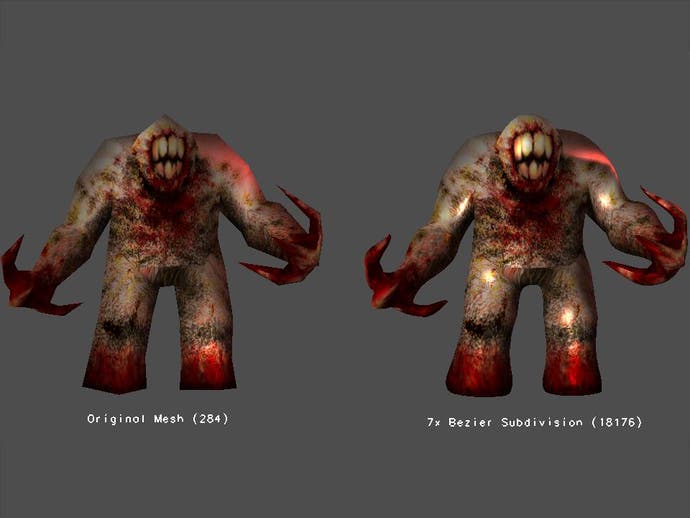The Truform is out there
ATI unveils new Truform technology .. which turns out to be a fancy name for n-patches
ATI has unveiled its new "TRUFORM™ rendering technology" which it will be using in future graphics cards, presumably including the soon-to-be-announced successor to the Radeon. The Canadian company promises that this will produce "the smoothest, most natural 3D images ever seen on both existing and next-generation 3D games" through both DirectX 8.0 and OpenGL. Before you get too excited though, this is actually just a new name for the n-patch technology which they showed off at the Windows Game Developers Conference in London last summer.

The way it works is by subdividing the hundreds of triangles which make up a 3D model and then moving the vertices around using some complicated mathematics to turn sharp angles into smooth curves. The end result is a character model which looks less blocky but contains many more triangles than the original, and the beautiful part of this is that it can be easily n-patched (sorry) into existing games without developers needing to change the source art. ATI's Jason Mitchell demonstated the technology using some models from five year old first person shooter Quake and the effect was certainly quite striking, taking the blocky old 284 poly Shambler and turning it into a curvaceous 18,176 poly beast.
Obviously this isn't going to be appropriate for every character model - robots and mechs for example are generally best left with plenty of sharp corners - but for more organic creatures and human characters it can prove rather impressive. In effect it also acts as a form of data compression (because the Truform transformations are done on the card, you don't need to pass the extra polys back and forth across the AGP bus) and a reverse level-of-detail feature (adding additional polys to a model if your graphics card can handle it, rather than removing polys from the model if your system is too slow).
"Developers usually create low triangle count models so that their games can run well on low-end PCs, which make up the vast majority of products used today by consumers", senior product manager Toshi Okumura pointed out. "TRUFORM can take these models and generate smooth, highly detailed images, affording most users a greatly enhanced visual experience with no compromise in performance or compatibility."
It's certainly a clever feature, although as we have yet to see it in action in a real-time environment it's hard to say how noticeable or effective it will prove in actual games, and how much of a performance hit it will produce.

